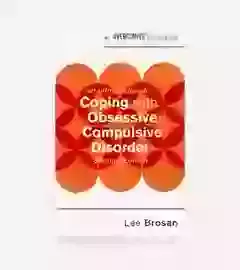Identifying the symptoms of Obsessive Compulsive Disorder (OCD)
Obsessive Compulsive Disorder (OCD) is a very well-known disorder, but it is often misinterpreted. This excerpt from An Introduction to Coping with Obsessive Compulsive Disorder explains the differences between popular misconceptions of OCD and the medical reality of the disorder.
Defining Obsessive Compulsive Disorder
'Obsessive'
The everyday use of the word ‘obsession’ often differs from what is meant by obsession in OCD. We might describe someone who spends most of their spare time on a hobby such as birdwatching as having an ‘obsession’. However, these ‘obsessions’ are very different from obsessions in OCD; in fact, it would be more accurate to use the term ‘preoccupation’ to describe them.
In the world of OCD, an obsession is defined as a persistent thought, image, or urge that just pops into your mind and triggers distress. These obsessions are frequent, unwanted, and difficult to control or get rid of. An example of an obsession might be an intrusive thought or image about harming your partner. You may experience this thought as very upsetting and try to push it out of your mind. Obsessions in OCD, however, are not simply worries about distressing images or real-life problems, but are associated in the person’s mind with the ability to prevent the harm occurring.
Almost everybody experiences some of the intrusive thoughts or urges that people with OCD have. But people with OCD cannot ignore such thoughts and believe they have the pivotal power to cause harm or prevent harm through their actions. Consequently, they try too hard to prevent the bad events from happening; and this in turn means the thoughts become more frequent and distressing so that, over time, they affect all areas of the person’s life.
'Compulsive'
In OCD, compulsions are acts that you repeat over and over again in response to an obsession. The aim of a compulsion is to reduce the likelihood of harm, so that you can feel ‘just right’ or ‘comfortable’, although over time they sometimes stop working. Certain compulsions tend to go with certain obsessions. For example, the most common combination is an obsession about contamination from germs or a bodily fluid that is linked with compulsive washing and cleaning. Compulsions like washing persist because they seem to ‘work’ by reducing distress or preventing anxiety. However, over time compulsions do not always go on ‘working’.
How to identify the symptoms of OCD
Only a trained health professional can diagnose you as having OCD. However, there are questionnaires and checklists that may help you assess yourself.
The following is a screening questionnaire from the International Council on OCD:
- Do you wash or clean a lot?
- Do you check things a lot?
- Is there any thought that keeps bothering you that you would like to get rid of but can’t?
- Do your activities take a long time to finish?
- Are you concerned with orderliness or symmetry?
If you answered yes to one or more of these questions and it causes either significant distress or it interferes with your ability to work or study, your role as a homemaker, your social or family life, or your relationships, then there is a chance that you have OCD. The test is not perfect, however, and can be a bit over-sensitive at diagnosing OCD, so it is important to seek a medical diagnosis.




